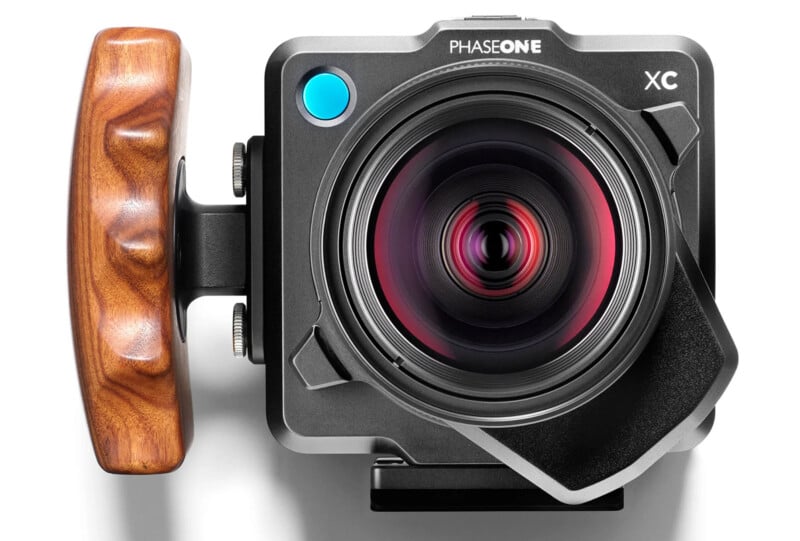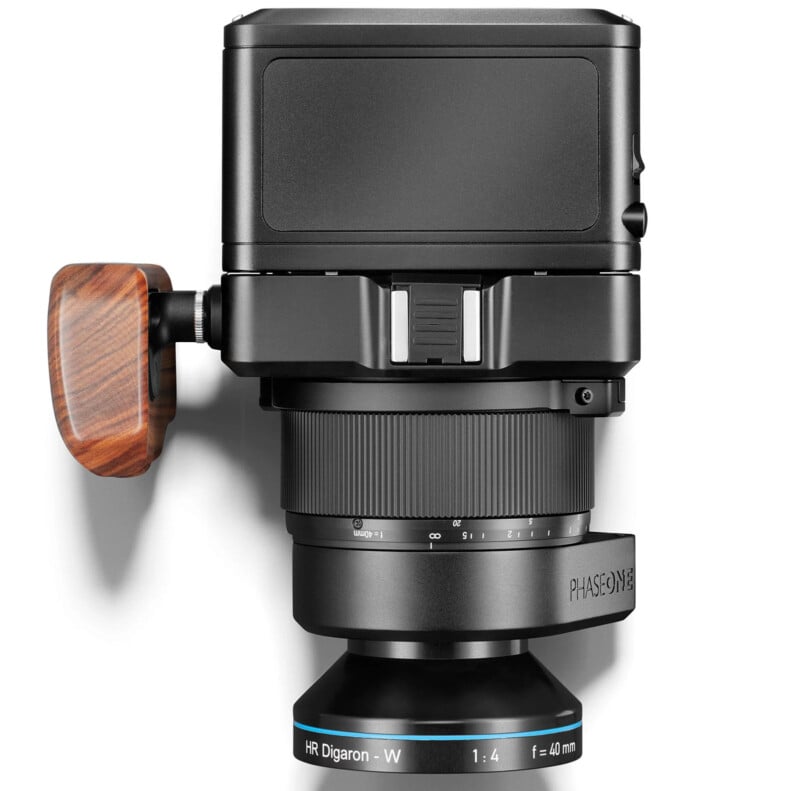Phase One’s XC 40 Medium Format Travel Camera Addresses Criticisms, Has a Longer Fixed Lens
![]()
Last year, Phase One announced the XC, an unusual 150-megapixel medium-format camera with a built-in Rodenstock 23mm f/5.6 lens. The Danish camera company has returned to the well, launching the XC 40 camera sporting a longer built-in lens.
In PetaPixel‘s review of the original Phase One XC, which remains on sale as the now-rebranded Phase One XC 23 variant, Chris Niccolls remarked on the somewhat limited utility of the Rodenstock HR Digaron-S 23mm lens, which delivers a full-frame equivalent focal length of just 14mm. This ultra-wide focal length is not often the go-to choice for landscape and travel photographers, it’s just so wide. The Phase One XC 40 instead offers a more traditional wide-angle 24mm equivalent focal length, which more closely resembles a “normal” wide-angle perspective.
The XC 40, like the XC 23, combines a built-in manual focus lens with the Phase One IQ4 150MP digital back. Specifically, the new lens is a Rodenstock HR Digaron-S 40mm f/4 lens, making it a full stop faster than the ultra-wide Rodenstock 23mm lens on the XC 23.
As for the digital back, it offers 150 megapixels of resolution. It’s a remarkable image sensor and offers significant cropping potential to add more versatility to the 40mm lens. The image sensor promises 15 stops of dynamic range, has an ISO range of 50-25,600, and captures massive 14,204 by 10,652-pixel images. The digital back captures 16-bit RAW images and is operated primarily through a large touchscreen.

The digital back is the brains of the operation and includes a range of exciting photography features, including automated frame averaging, automatic metering (which is unusual for a “field camera”), mobile integration, built-in Wi-Fi, assisted “expose to the right” metering, and bespoke “IQ Styles” to dial in the perfect look.
Like with the original XC camera, the significant question Phase One must answer is why a photographer would opt for this new XC 40 instead of a Phase One XF or XT body, both of which support interchangeable lenses. The Phase One XT is the obvious competitor to the XC, as it is also a field camera, albeit one with tilt and shift functionality for attached Rodenstock lenses. Phase One’s primary marketing approach is to tout the XC family’s compact, travel-friendly design, which is undoubtedly distinct within the medium-format photography space.

Pricing and Availability
One of the biggest critiques against the original XC was that customers were forced to buy the XC body with the integrated 23mm lens with the detachable IQ4 150MP digital back, which ballooned the cost to an eye-watering $62,490. Now, the renamed XC 23 and the new XC 40 are available without the digital back, bringing the price down to $20,290 for each. Each is available through authorized retailers, including Capture Integration.
Image credits: Phase One